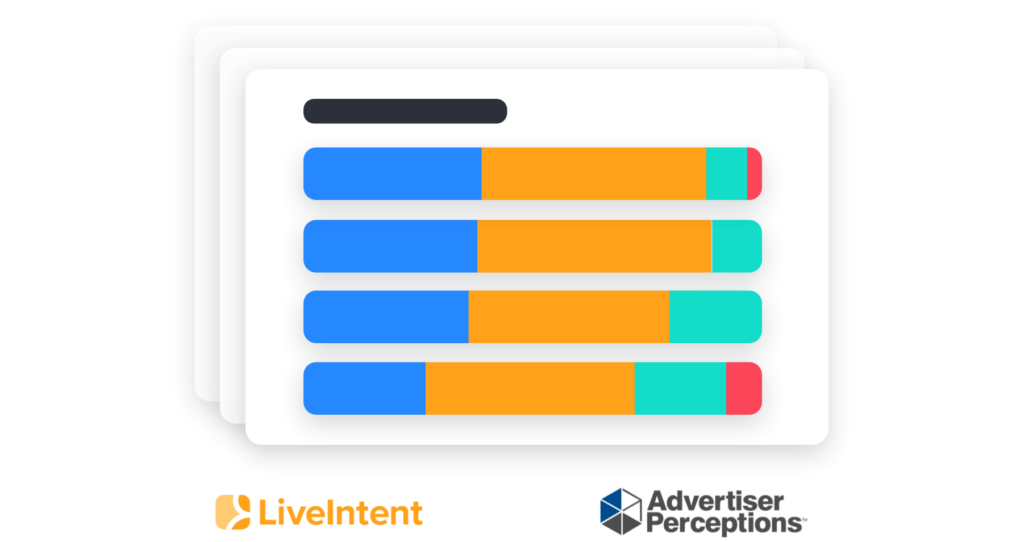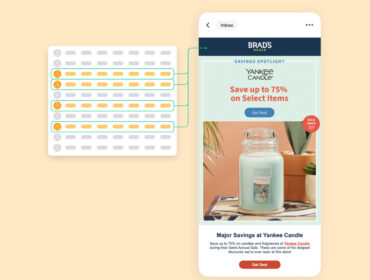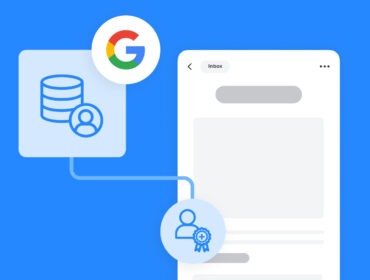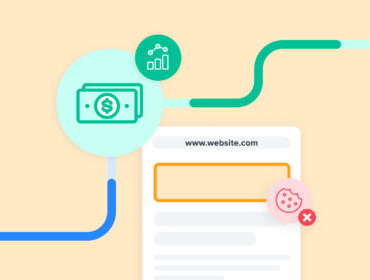Advertiser Perceptions: Encrypted email identifiers and the changing Identity landscape
To understand how advertisers are preparing for and adapting to changes in identity within the digital landscape, LiveIntent conducted a study in partnership with Advertiser Perceptions. The study interviewed 151 US advertisers spending at least $10,000 annually on digital advertising to uncover how they’re addressing identity in the short and long term. Respondents were manager-level and above and reflected a mix of verticals. Here, we explore the findings of that study.

When considering the onus for finding alternatives to third-party cookies and mobile ad IDs (MAIDs), most advertisers agree that the responsibility sits with two major groups:
- 90 percent strongly/somewhat agree that ad tech platforms have an industry responsibility to develop alternative solutions to third-party cookies and MAIDs
- 85 percent strongly/somewhat agree that industry trade organizations should be leading the development of alternative solutions to third-party cookies and MAIDs
Adapting to a world without third-party cookies presents operational challenges for most organizations — many of which lack the internal resources, education, and preparedness to implement identity solutions. It’s understandable then, that advertisers believe the responsibility of finding alternatives sits with ad tech partners and industry trade organizations, and plan to lean on these partners to help them tackle the challenges related to identity, targeting, and measurement.
Most agree that advertisers and publishers have a primary responsibility for finding alternatives to third-party cookies

Those in direct contact with users (e.g., advertisers and publishers) have the primary responsibility of finding alternatives to third-party cookies and Ad IDs.

Industry trade organizations (e.g., IAB, 4As) should be leading the development of alternative solutions to third-party cookies and Ad IDs.

Ad tech platforms have an industry responsibility to develop alternative solutions to third-party cookies and Ad IDs.

The government should be involved in developing alternatives to third-party cookies and Ad IDs.
Alternative Identity solutions
The industry has seen the rise of several addressability and targeting solutions since Google’s announcement to deprecate third-party cookies. However, the approaches that most US advertisers are taking to identify and target audiences in a post-cookie world are those that leverage first-party data. While advertisers prioritize approaches that leverage first-party data, they will also lean on other tactics and partnerships to maintain addressability in the absence of third-party cookies. According to findings, advertisers are leaning into various strategies, like contextual targeting.
Top-5 tactics currently/planning to implement in preparation for impact on audience identification/targeting

Greater use of our [own/main client’s]
first-party data

Greater investment in resources and partners devoted to growing and securing first-party data

Use of third-party vendors offering audience authentication and targeting capabilities

Partnering with [agencies and] brands to extend the reach of our combined first-party data sets

Use of contextual targeting and other targeting that does not rely on personally identifiable information (PII)
Despite changes in targeting and audience identification, other elements in digital remain constant. The top three concerns for advertisers in a world post-third-party cookies and mobile ad IDs include:
- Advertising performance
- Ability to measure and prove ROI/ROAS
- Ability to reach target audiences
These findings indicate that although there are changes in the digital landscape, advertisers are still concerned with quantifying campaign performance and impact on business outcomes and will continue to seek out solutions that help them address these concerns.
The Identity landscape: Looking ahead
Currently, advertisers are leaning on their agencies as well as ad tech and martech partners to strategize long-term solutions to address privacy changes. As they look ahead, advertisers will look to industry-backed ID graphs or consortia to address identity. As previously indicated, the industry is leveraging — and will continue to leverage — a variety of solutions to address identity, targeting, and privacy in a world post third-party cookies. With this in mind, advertisers will hold partners to higher standards on targeting, privacy, and measurement than ever before, especially as they look to these groups for guidance on long-term solutions.

9 in 10 marketers will lean more heavily on agencies to help with changes

3 in 5 marketers have already seen agency innovation in the way of privacy changes
Advertisers will be holding partners to higher standards on targeting, data privacy and measurement
We will be holding our adtech and martech partners to higher standards on their targeting capabilities.

We will be holding our adtech and martech partners to higher standards on their data privacy capabilities.

We will be holding our adtech and martech partners to higher standards on their measurement capabilities.

With advertisers focusing more heavily on contextual targeting and first-party data to reach target audiences, they will vet publishers against the quality of their content and first-party data in the absence of third-party cookies. Advertisers and publishers will establish more direct relationships to complement and utilize one another’s audience insights in a more secure, privacy-compliant way.
Marketers will be leaning more heavily on adtech and martech partners to educate and assist them on making changes to technology and identity partners
We will be leaning more heavily on adtech and martech partners to keep us abreast of upcoming industry changes and regulations.

We will be leaning more heavily on adtech and martech partners to provide the necessary tech support/assistance to update and implement new technology/code.

We will be leaning more heavily on adtech and martech partners to suggest additional identity solutions and vendors to further bolster our capabilities.

Most important criteria when considering publishers to partner with in the future
Quality of content

Quality of first-party data

Ability to authenticate audiences

Measurement offerings

Strength of existing relationship

Contextual capabilities that offer an endemic fit with my brand/product

Publisher reputation

Breadth of ad formats/inventory types

Monthly unique visitors

Advertisers understand that email newsletters, which already rely heavily on first-party data, will be relatively unaffected by the deprecation of third-party cookies. As such, nine in 10 advertisers see newsletters as a valuable way to reach audiences and personalize communication in the absence of third-party data. It is unsurprising then, that advertisers are turning to email newsletters to grow their email lists and are investing in partnerships that will help them understand and activate their data. This interest and investment in email newsletters and first-party audience data is also transforming the landscape of internal teams, evidenced by advertiser plans to hire content marketers and data scientists or specialists to address the needs of newsletter content creation and first-party data activation, respectively.
9 in 10 marketers see newsletters as a valuable way to reach, target and personalize communication in the absence of third-party data
Moving forward, newsletters will become a valuable way to reach and target consumers in the absence of third-party data

Newsletters allow for the collection of first-party data while providing the user value in the delivery of personalized, relevant content

Newsletters provide a vital connection point with consumers

It is easy to translate newsletter performance to actual sales and revenue impact

Advertisers have relied on encrypted email identifiers in more than half their marketing efforts, a critical tool in targeting, implementing dynamic creative and measuring advertising efforts. Advertisers are most satisfied with the measurement and targeting capabilities of their newsletter advertising strategies and plan to rely heavily on newsletters to meet their advertising and ROI/ROAS goals.
Solutions to grow or enhance first-party data
Growing email lists via newsletters

Site/app visitation behavior

Social media

Via content marketing

Direct-to-consumer business models

Point of purchase

Surveys

Registration to access on-property content

Sweepstakes Promotions

Direct mail

Advertisers are most likely to use encrypted email identifiers for lookalike targeting, dynamic creative and ad measurement
Likelihood (very likely) to use encrypted email identifiers for the following
Extending audiences via lookalike targeting

Marketing/advertising personalization/dynamic creative

Measurement/metrics

Audience segmentation

On-site personalization

Continued 1:1 targeting

Cross-device or cross-channel audience targeting

With these insights in mind, there are a few steps advertisers can take to ensure they’re prepared to navigate a world without third-party cookies:
- Spring into action. Google’s announcement regarding their decision to delay the third-party cookie’s deprecation to 2023 is an opportunity for advertisers to spring into action and get their ducks in a row before we say goodbye to cookies for good.
- Do your due diligence. Advertisers should talk to Identity solution providers and technology partners. They’ll need to learn how different partners can help grow their first-party data and activate it. Advertisers should ask their partners how they can help them achieve their goals without relying on third-party cookies.
- Lean into newsletters. Email newsletters are a great way to grow email lists, target audiences, and personalize marketing messages while also enabling measurement. Advertisers should start testing and using email newsletters to inform their future strategies.
Of course, adapting to a cookieless world will take time and testing. Advertisers should partner closely with technology and solution providers to ensure they’re testing, measuring, and optimizing their strategies appropriately. Solving for identity won’t be a one-size-fits-all approach and, as we saw with our findings, will likely require partnership across a variety of tools and methodologies to ensure success. This is why it’s important that advertisers act now and take advantage of the delay in the deprecation of the third-party cookie.
Interested in learning more about these findings? Check out the full video of our webinar with Advertiser Perceptions below, or contact us to learn more.
About LiveIntent
LiveIntent, one of the world’s largest people-based marketing platforms, connects 2,500 publishing and advertising brands with over 290MM verified people every month across all types of media. With the hashed email address at the center of its industry-leading identity graph, LiveIntent provides brands with solutions that help them monetize, acquire, and retain real people, even where cookies don’t work. LiveIntent enriches a brands’ data, making it possible for them to deepen their understanding of their audiences, and more effectively market to people wherever they are present and paying attention. LiveIntent is home to over 180 people worldwide with offices in New York, Berlin, and Copenhagen.
About Advertiser Perceptions
Advertiser Perceptions is the global leader in research-based business intelligence for the advertising, marketing, and ad technology industries. Their expert staff delivers an unbiased, research-based view of the advertising market with analysis and solutions tailored to a company’s specific KPIs and business objectives. These insights provide clients with the confidence to make the very best organizational, sales, and / or marketing decisions, driving greater revenue and increased client satisfaction. (www.AdvertiserPerceptions.com)


